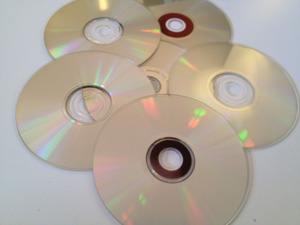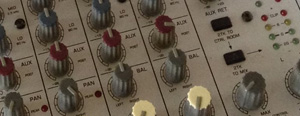by Paul Virostek
What’s the best way for a new field recordist to begin building a sound library? How can a sound designer grow a folders of scattered samples into a collection with heft and weight?
Huge sound clip libraries roam the Web. Some have tens of thousands of sound effects. New sound pros are easily intimidated. Perhaps you want to sell your sound clips on the Internet. Maybe you just want to grow your collection to use in your own projects. How can you grow a similar sound library? Most of us don’t have thousands of dollars to spend doing so.
I know the feeling. I began building my sound library of with only a handful of DAT tapes. Now it numbers over 20,000 samples. You can do this, too.
So, today I’ll share three ways to start building a sound library. I’ll explain the difficulties, how to avoid them, and the pros and cons of each method.
What You Need to Get Started
What do you need to start a sound collection?
A good library demands endless intangible qualities: ideas, creativity, flexibility, and originality. We’ll look at things more directly, though. What tools do you need to begin building a good collection?
- Gear.
- Sound isolation.
- Original recordings and copyright.
- Cash.
- Time.
Your choice of the following three options depends on how much of these you have, and want to use.
1. Do It All Yourself
The simplest way to get started is to do everything yourself. This means you’ll provide the gear. You’ll shape the recording space (whether a sound booth, or a clean atmosphere outside). You’ll find the cash to fund everything, and the time to get things done.
The major benefit of this option is control. You can record in your home at two in the morning. There’s no need to schedule studio time, or rely on assistants to show up.
And, since you produce every clip, you’ll own all of them. You can twist them, remix them, or even give them away however you like. Your collection will be perfectly legal and 100% yours.
Many recordists on a budget are able to find free software and plug-ins to achieve the same effect as commercial options. You’re free to adapt your home for the best recordings: shut off the HVAC, unplug the fridge, and so on.
Just the same, the recording environment won’t be as pristine as a studio. That may mean you’ll have to alter what you record. For example, you may not be able to record quiet props. Loud, more prominent recordings will work well, however. You may wish to focus on exterior atmospheres, too. Just ensure a substandard recording space doesn’t sacrifice the quality of your recordings. Sound isolation and quality are extremely important for a high-quality collection.
Pros
• You learn a lot.
• You improve your craft.
• You have complete control.
• The only expense is time.
Cons
• Lack of sophisticated equipment.
• Possibly a noisy environment.
• Takes longer.
2. Record in a Studio
Major cities will have dozens of recording studios. They’ll feature the latest software, and plug-ins. They’ll stock a mixture of modern equipment and classic vintage gear. These studios will be soundproof, and acoustically treated. This allows you to capture delicate, quiet sounds. This is a good choice to ensure you have clean recordings. You also have access to superior microphones.
However, this benefit comes with a cost. Studios are expensive. Research options. Big studios charge $200 an hour. There are cheaper, smaller studios that charge as low as $50 an hour. Weekend rates are cheaper. Night rates are cheaper still.
If you decide to work this way, make sure that you are fully prepared. Make a list of everything you want to record. Gather all your props beforehand. This means you will need less time in the studio to record what you need. That makes it cheaper.
It’s a good idea to explain to the engineer that you must own all recordings. Most of the time they don’t care. They’re selling the space, not the artistic work. It’s critical to have this discussion, nonetheless.
Do you have your own recorder? Comfortable choosing and arranging microphones? Record everything yourself. Inform the facility you don’t need an engineer. This will save a bit more in studio costs.
Remember to bring your own hard drive. Don’t use theirs. Others may use the studio later, and mistakenly use sound effects you own.
This option resolves the fragile recording process itself. Once the recordings are captured you can return to your home studio and master all the final clips yourself.
Pros
• Professional, modern equipment.
• Pristine recording space.
• Engineer’s expertise with acoustics, microphone quality, and so on.
• Creative advice from a sound pro. Collaboration.
Cons
• Need to pay whenever you want to record.
• Dependent on others.
• Must ensure ownership of files with studio.
3. Hire an Artist.
A third option is to pay someone else to build a sound library for you. There are hundreds of sound pros that are happy to record or design sound effects for your collection. These pros are highly-talented people that will deliver superior recordings.
In this case, you’ll send them a list of tracks you need. You may choose from a selection of existing tracks and “buy out” the rights to own them yourself. The fee for this will be based on an hourly rate, a bulk package, or a price based on quantity.
This is a quick, effortless way to build your sound library. An appealing side effect of hiring others is that they’ll provide a fresh take on sound recording.
There are two issues, however.
First, this is usually expensive. The cost of labour makes it a bit too pricey. You may never make up the costs of two days of artist labour in sound effect sales. You may find someone cheaply, though. That is key. Perhaps you can hire a talented film school student and a lower rate. The second issue is that your freelancer must sign a contract transferring ownership of the work to you. This is called work-for-hire. This ensures you own the creations, can use them in your own projects, and resell them if you like.
It’s important to realize that you’re working with creators, just like you. You have worked hard to create your own tracks, and they are precious to you. The freelancers you hire will feel the same. Most artists are reluctant to give up ownership of their creations. They’re usually emotionally invested in them. It’s completely understandable.
This arrangement certainly can work, however, you just need to make the issue of ownership clear. Tell them you are buying out the sounds, and that you plan to sell them later. Mention this before you begin the work. This ensures everyone is beginning the project with the same understanding.
Pros
• Fast.
• High-quality, professional work.
• Fresh recordings.
Cons
• Expensive.
• Creative ownership must be guaranteed.
• Must ensure freelancers own the copyright of the clips they are selling you.
Which Do You Choose?
No single option is better than the other. Instead, your best choice is the balance of cash, time, and availability to sound isolation and gear that works for you. Your choice may be influenced by people, too. Are you more comfortable working alone, or do you like bouncing ideas off of others? Perhaps you feel it’s easier to let someone else do all the work instead. Involving others can be inspiring. It adds expense, but saves time.
Be aware that beginning a sound library is a long journey. It takes time to record and polish sound effects. The initial up-front investment in time and cash is real, however it will pay off handsomely over the years of your sound career. Use these three options to begin your sound library now. Why?
A strong collection represents your skill and inspiration in every clip you record, master, and publish. As your sound library grows, it will become involved in every project you join, amplify it, and share your creativity with all that hear your work.
 About the author: Paul Virostek travels worldwide recording the sounds of cities and cultures. He shares his collection at airbornesound.com, and writes about his experiences field recording, and sharing sound effects at jetstreaming.org. He is also the author of “Field Recording: from Research to Wrap – An Introduction to Gathering Sound Effects“, which was published in 2012.
About the author: Paul Virostek travels worldwide recording the sounds of cities and cultures. He shares his collection at airbornesound.com, and writes about his experiences field recording, and sharing sound effects at jetstreaming.org. He is also the author of “Field Recording: from Research to Wrap – An Introduction to Gathering Sound Effects“, which was published in 2012.








